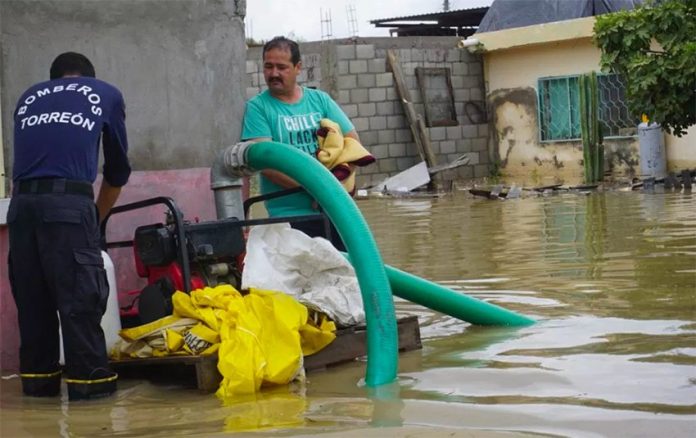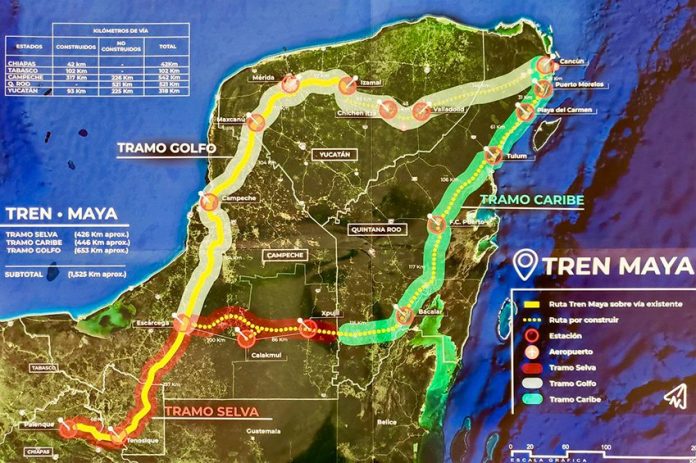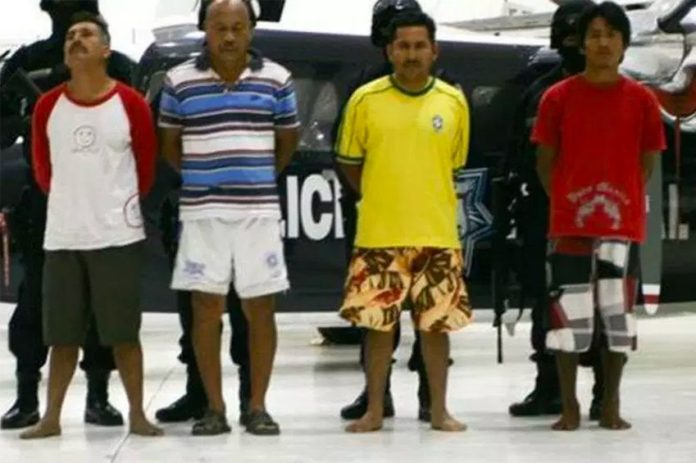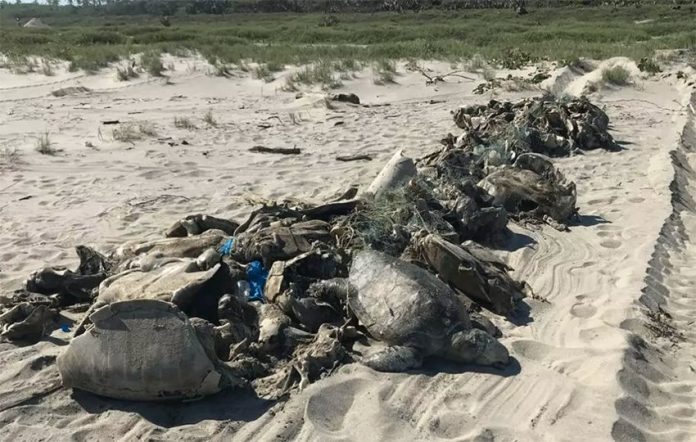Did Mexico betray Canada by signing a separate trade deal with the United States and if so, why?
Economy Secretary Ildefonso Guajardo rejected the suggestion last week amid charges in Canada that Mexico threw Canada under the bus, declaring that he can look Canadian Foreign Minister Chrystia Freeland in the eyes with “integrity and conviction” and tell her that there was no betrayal.
But the plot has now thickened with the revelation that three months before Mexico made a bilateral trade deal with the United States, Canada attempted to do the same — and very nearly succeeded.
And so, the question is raised: if indeed there was betrayal, was Mexico’s double-cross an act of revenge for treachery first committed by Canada?
According to a report published Saturday by the Canadian newspaper The Globe and Mail, Canada saw an opportunity to make a quick NAFTA deal in May as a deadline set by United States House Speaker Paul Ryan loomed.
Canada offered two big prizes to the administration led by United States President Donald Trump: it would agree to rules stipulating higher wages for the automotive sector — which would likely result in manufacturing jobs moving out of Mexico — and give American farmers greater access to its protected dairy market.
In exchange, Canadian negotiators asked the United States to withdraw most of its other demands.
Mexican negotiators were blindsided by Canada’s offer, The Globe and Mail said, because they weren’t ready to agree to auto rules requiring 45% of vehicle content to come from areas where factory workers are paid at least US $16 per hour, and they believed they had an agreement with Canada that neither junior NAFTA partner would seek a separate deal with the United States.
However, if such an accord did exist — as both Mexican and Canadian sources said it did — Canada seemingly was prepared to put it to one side in the name of self-interest.
While both Canadian Prime Minister Justin Trudeau and Freeland said repeatedly that they wanted NAFTA to remain a trilateral accord, neither took the additional step of promising that they would not sign a two-way deal with the United States.
As the clock ticked down to Paul Ryan’s May 17 cutoff date, Katie Telford, chief of staff to Trudeau, and Brian Clow, a point man for Canada-United States relations, rushed to Washington D.C. to present an updated NAFTA accord to White House officials that included a 40% to 45% high-wage content rule, without subjecting it to further negotiation with Mexico as had been agreed.
During remarks made at an event at the Economic Club of New York on May 17, Trudeau hinted that the Canadian proposal could lead to a swift deal.
“To be honest, we are down to a point where there is a good deal on the table,” he said. “It’s right down to the last conversations.”
The same day, Guajardo warned the Canadian prime minister via Twitter that Mexico would not approve of a deal that negatively affected Mexican jobs.
“Congratulations @JustinTrudeau for a great interview at @EconClubNY – but a clarification is necessary: any renegotiated #NAFTA that implies losses of existing Mexican jobs is unacceptable,” he wrote.
The Globe and Mail reported that some of Trump’s top advisers, including economic chief Larry Kudlow, Treasury Secretary Steve Mnuchin and son-in-law Jared Kushner, were inclined to agree to Canada’s offer but it couldn’t go ahead because it was rejected by U.S. Trade Representative Robert Lighthizer.
Although Canada’s attempt to leave Mexico out of the deal ultimately failed, the move aggravated Mexico. But its officials soon found themselves in the same position as Canada: negotiating separately with the United States.
“Canada swung for the fences in May with a skinny NAFTA deal. I think Mexico remembered that,” said Daniel Ujczo, an Ohio-based trade lawyer representing auto and steel companies that trade under NAFTA.
“Any country in Canada’s position would have tried that, but it came with risks, and one of the risks manifested itself [last] week,” he added, referring to the announcement of the Mexico-U.S. deal, which Canada still hasn’t joined although negotiations are ongoing.
Mario Maldonado, a business journalist for the newspaper El Universal, said that Mexican negotiators were caught off-guard by Canada’s play to exclude it from a revised deal with the U.S. and were upset initially but ultimately “didn’t care so much about it” because it failed.
Any lingering anger likely dissipated two months later when, in July, Lighthizer invited Mexican officials to negotiate separately in Washington D.C.
During five weeks of talks, negotiators from both Mexico and the United States reassured their Canadian counterparts that the two countries were resolving bilateral issues that Ottawa had already agreed to or did not involve Canada at all.
However, when Trump announced what he called the “United States-Mexico Trade Agreement” on August 27, those reassurances were exposed as a ruse, The Globe and Mail contended.
“The two countries emerged with a complete deal to overhaul nearly every aspect of NAFTA. Despite the Canada-Mexico back-channel, Canadian officials were caught off-guard. Two sources said the Canadians didn’t even have all the details on what the other two countries had agreed to for days after the announcement,” the newspaper said.
The day of the announcement, Trump said that Canada could be excluded from the deal and at the end of the same week — Friday, August 31 — he notified the U.S. Congress that his administration intended to sign a new trade agreement in 90 days with Mexico and Canada, if the latter “is willing.”
The next day, the U.S. president tweeted: “There is no political necessity to keep Canada in the new NAFTA deal. If we don’t make a fair deal for the U.S. after decades of abuse, Canada will be out.”
President Enrique Peña Nieto and Guajardo stressed that they wished for the trade deal to remain trilateral but Foreign Affairs Secretary Luis Videgaray, who was also closely involved in negotiations with the United States, said the bilateral agreement was not contingent on Canada’s inclusion.
“There will be a free-trade agreement with the United States regardless of whether Canada continues or not,” Videgaray said in a news conference at the Mexican embassy in Washington.
“We have a complete understanding between Mexico and the United States.”
Canada now finds itself in the position that Mexico would have been in had it been excluded from a preliminary bilateral deal: under pressure to accept the terms already agreed to by its NAFTA partners, although so far it has remained steadfast that it will only sign a deal that is good for Canada.
Meanwhile, Mexico, to some extent, has managed to put to rest concerns about the future of the economic relationship with its most important trade partner.
While it was forced to agree to the inclusion of rules stipulating higher wages, which it previously found untenable, Mexico also won some concessions from the United States such as the elimination of a so-called sunset clause that would have seen the agreement automatically expire after five years if updated terms are not agreed to.
The current Mexican government still faces a tight timeline to sign off on a formal agreement before President Peña Nieto leaves office at the end of November.
But considering that it could be in the position that Canada finds itself in now — negotiating with a U.S. administration led by a tough-on-trade president whose demands appear to be non-negotiable — Mexican officials are publicly celebrating what has already been achieved.
Even while simultaneously having to fend off the claims it betrayed its fellow junior NAFTA partner.
Source: The Globe and Mail (en)








